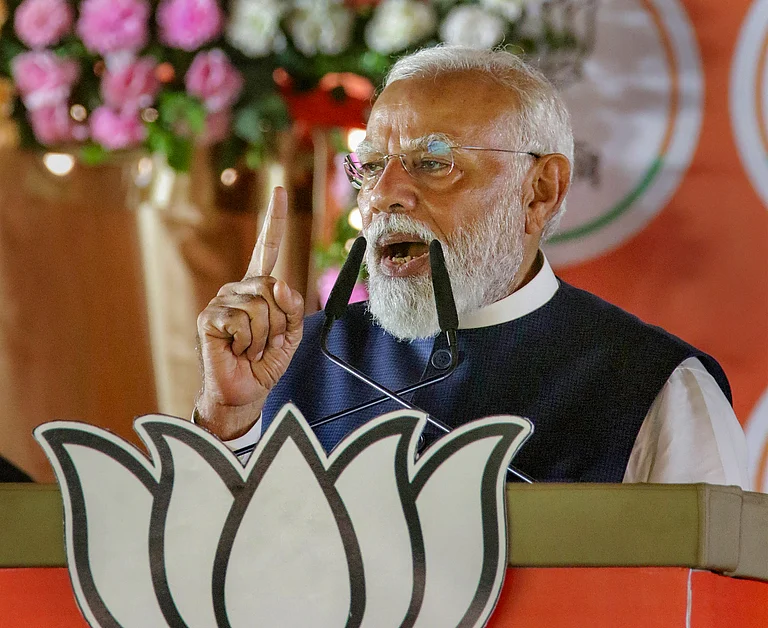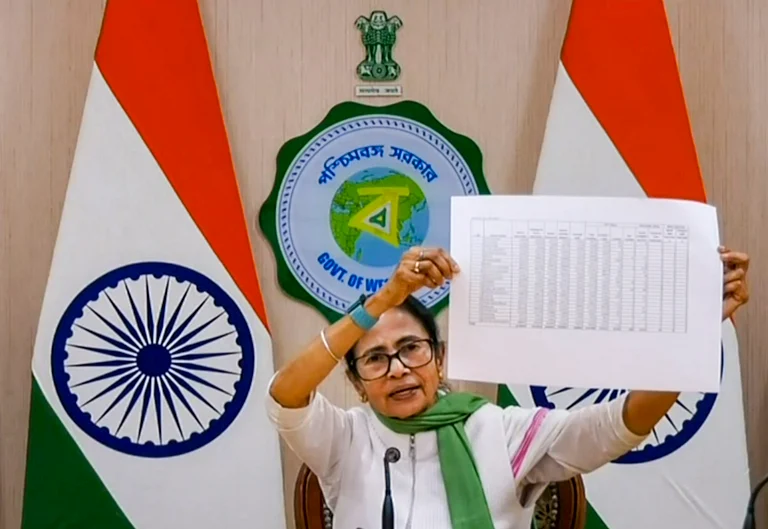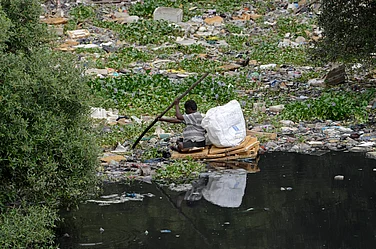West Bengal is all set to witness a three-corner contest in the Lok Sabha election 2024 between the state’s ruling party, the Trinamool Congress (TMC), the main opposition Bharatiya Janata Party (BJP) and an alliance between the Left and the Congress.
Whether the three-year-old Indian Secular Front (ISF), which has created some support base in a few Muslim-concentrated pockets, also joins the Left-Congress alliance remains to be seen.
The TMC named all its 42 candidates on March 10, while the BJP has named 39 as of March 25. The Left and the Congress have named about 30 candidates. Though minor glitches remain over Left Front partner Forward Bloc’s demands for the Congress’ choice of Purulia seat, the CPI(M) is trying to convince its junior partner to leave the seat to the Congress.
Going by the results of the 2019 Lok Sabha elections and the 2021 assembly elections, the third force barely stands a chance of influencing the results. In 2019, the TMC polled 43.7 per cent of the votes and won 22 seats – 12 less than its 2014 tally – while the BJP won 18 seats with a 40.6 per cent vote share.
The Congress and the Left contested separately in most of the seats. However, the Left did not field any candidate against the Congress in two seats – Baharampur and Maldaha Dakshin – and the Congress managed to win both, though their overall vote share in the state was a meagre 5.3 per cent. The CPI(M), with a 6.7 per cent vote share, drew a blank.
In the 2021 assembly election, the TMC gained from all the opponents. While the TMC’s vote share increased to 48.5 per cent, helping them win 213 of the state’s 294 assembly seats, the BJP’s vote share reduced to 38.5 per cent. The CPI(M)’s share hit rock bottom at 4.8 per cent and so did the Congress’s share at 3 per cent. The Left, Congress and the ISF, fighting in alliance, polled only 9.2 per cent vote together.
It is noticeable that in the 2014 Lok Sabha election, the TMC bagged 34 of the state’s 42 Lok Sabha seats by securing 39.8 per cent of polled votes. In 2019, their seat tally was reduced by one-third despite an increase in vote share because the opposition votes, which remained split between the CPI(M) and the BJP in 2014, consolidated behind the BJP in 2019.
However, many such arithmetics may have changed by now. The period between the 2019 and 2021 assembly elections saw several TMC leaders switching to the BJP, perhaps taking the TMC to be a sinking boat. But the post-2021 days saw six BJP MLAs joining the TMC. Several leaders who went to the BJP came back.
At the same time, the post-2021 election months have also seen chief minister Mamata Banerjee’s party getting embroiled in a series of alleged scams – from recruitment to public distribution system.
If the image of heaps of currency notes recovered from an aide of TMC heavyweight Partha Chatterjee dented the party’s public image, the arrest of senior leaders like Jyoti Priya Mullick and Anubrata Mandal have dealt organisational blows to the party in districts like North 24-Parganas and Birbhum.
Owing to all these factors, the TMC may not be standing on as solid ground as they were three years ago. This was reflected in how the party fielded several new faces and as many as 11 sitting MLAs, including two ministers, and a Rajya Sabha MP.
The BJP struggled to keep momentum since the 2021 assembly election defeat. It has found some energy since the public outburst against the TMC in the Sandeshkhali region of the Sundarbans.
The party has named eight sitting MLAs and Lok Sabha candidates among the first 39 names. The biggest name in their candidate list, though, is the former Calcutta high court judge Abhijit Gangopadhyay, the person who caused the third Mamata Banerjee government the greatest embarrassment with his series of orders and comments on the alleged school recruitment scam. Gangopadhyay recently resigned from the judiciary and joined the BJP.
According to leaders of the TMC and the BJP who spoke to Outlook on condition of anonymity, the BJP may have lost ground in some of the seats it won in 2019 – for example Jalpaiguri, Alipuduar, Purulia, Bishnupur, Hooghly, Jhargram, Medinipur and Bardhaman-Durgapur.
Similarly, the TMC may have lost ground in some seats they currently hold – Arambagh, Kolkata Uttar, Serampore, Basirhat and Barasat.
Amidst these changes, the Left-Congress alliance can upset the arithmetics all the more if they manage to improve their performance.
In the 2023 panchayat elections, the Left, Congress and the ISF showed signs of recovery and polled about 20 per cent votes, though contesting separately. Now, fighting in alliance, they can upset the equations in several seats if they manage to get a 15-16 per cent vote share.
Among high-profile seats involving Left-Congress candidates are Murshidabad and Baharampur, where the alliance candidates are CPI(M) state secretary Md Salim and Congress state president Adhir Ranjan Chowdhury, respectively. Both the seats are in Murshidabad district, the one with the state’s highest Muslim population (47 lakh, according to the 2011 census).
It is the district where the Left and the Congress recorded their best performance in the 2023 rural elections.
As the polling dates inch forth, both the BJP and the TMC have started their attempts to polarise the voters on anti-TMC and anti-BJP lines. The BJP is telling voters that only they, for being in power at the Centre and having control of central investigating agencies, can tackle the TMC's misrule.
The TMC, on the other hand, says that only they, as the state's ruling party, can protect people from the troubles of the Citizenship Amendment Act (CAA) and any citizenship screening exercise.
In several south Bengal districts, the TMC hopes that the Left-Congress’ potential recovery would weaken the BJP. In contrast, the BJP hopes to gain from a split in Muslim votes in districts like Murshidabad, Malda, Uttar Dinajpur, North 24-Parganas and South 24-Parganas if the Left-Congress alliance manages to dent the TMC’s support base among the Muslims.
In this context, the most important development to watch out for is whether the Left-Congress alliance garners enough public support to break the TMC-BJP binary of Bengal politics.


























